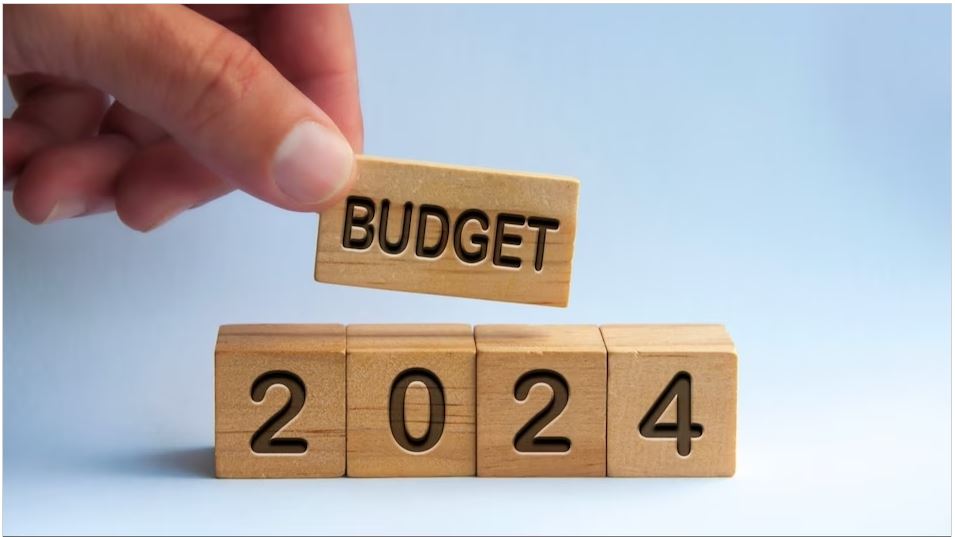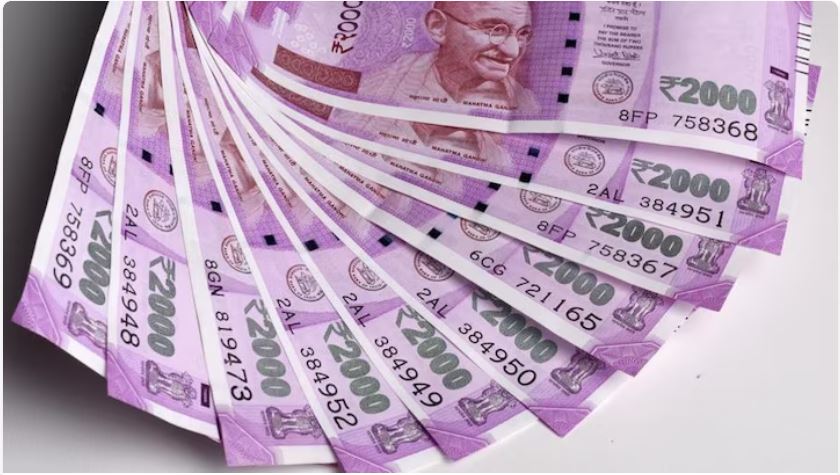Income Tax, TDS, TCS Changes From 1st April 2025
The Budget 2025 introduced major amendments to the Income Tax Act, 1961, aimed at simplifying India’s tax structure. These changes take effect from 1st April 2025 and will be applicable for FY 2025-26 (AY 2026-27).
1. Income Tax Slabs for FY 2025-26 (AY 2026-27)
The Budget 2025 introduced revised tax slabs under Section 115BAC (New Tax Regime) to enhance savings and boost spending capacity. These new slab rates apply to income earned in FY 2025-26 onwards.
| Income Tax Slabs | Income Tax Rates |
|---|---|
| Up to ₹4 lakh | NIL |
| ₹4 lakh – ₹8 lakh | 5% |
| ₹8 lakh – ₹12 lakh | 10% |
| ₹12 lakh – ₹16 lakh | 15% |
| ₹16 lakh – ₹20 lakh | 20% |
| ₹20 lakh – ₹24 lakh | 25% |
| Above ₹24 lakh | 30% |
Note: Old Tax Regime (Optional) slab rates remain unchanged.
2. Increased Rebate Under Section 87A
The rebate under Section 87A has been increased to ₹60,000 from the previous limit of ₹25,000. This means taxpayers with income up to ₹12 lakh will have zero tax liability under the New Tax Regime.
3. Tax Deduction at Source (TDS) Changes
Effective April 2025, the TDS threshold limits for various sections have been increased as follows:
| Section | Before 1st April 2025 | From 1st April 2025 |
|---|---|---|
| 193 – Interest on securities | NIL | ₹10,000 |
| 194A – Interest other than Interest on securities | (i) ₹50,000 for senior citizens (ii) ₹40,000 for others (banks, co-op societies, post offices) (iii) ₹5,000 in other cases | (i) ₹1,00,000 for senior citizens (ii) ₹50,000 for others (banks, co-op societies, post offices) (iii) ₹10,000 in other cases |
| 194 – Dividend for individual shareholder | ₹5,000 | ₹10,000 |
| 194K – Income from mutual fund units | ₹5,000 | ₹10,000 |
| 194B & 194BB – Winnings from lottery, crossword, horse race | Aggregate exceeding ₹10,000 annually | ₹10,000 per transaction |
| 194D – Insurance commission | ₹15,000 | ₹20,000 |
| 194G – Commission/prizes on lottery tickets | ₹15,000 | ₹20,000 |
| 194H – Commission or brokerage | ₹15,000 | ₹20,000 |
| 194I – Rent | ₹2,40,000 annually | ₹50,000 per month |
| 194J – Professional/technical services fees | ₹30,000 | ₹50,000 |
| 194LA – Compensation on land acquisition | ₹2,50,000 | ₹5,00,000 |
| 194T – Remuneration/interest/commission to partners | NIL | ₹20,000 |
The following changes in TDS Rates will apply from 1st April 2025:
| S. No. | Section of the Act | Existing TDS/TCS Rate | Proposed TDS/TCS Rate |
|---|---|---|---|
| 1. | Section 194LBC – Income in respect of investment in securitization trust | 25% (if payee is an Individual or HUF) and 20% (otherwise) | 10% |
Note: Other TDS provisions remain unchanged.
4. Omission of TCS on Sale:
Existing Provision (Section 206C(1H))


Issue with Existing Provision


Key Change:


4. Benefits to Taxpayers



5. Effective Date

5. Tax Collected At Source (TCS) Changes
The following TCS changes will be effective from April 2025:
| Section | Before 1st April 2025 | From 1st April 2025 |
|---|---|---|
| 206C(1G) – Remittance under LRS & Overseas Tour Packages | ₹7 lakh | ₹10 lakh |
| 206C(1G) – Remittance for education through loans | ₹7 lakh | NIL (No TCS) |
Definition of “Forest Produce” Rationalized
Q1. What are the major provisions of Section 206C(1) (TCS on Sale of Specified Goods)?

Q2. What changes were made in Finance Bill 2025?
Three major amendments:
- “Forest produce” has been formally defined.
- Scope clarification: Now, only “forest produce under a forest lease” is liable for TCS.
- TCS Rate Reduction:
- TCS on timber and other forest produce (excluding tendu leaves) under a forest lease is reduced from 2.5% to 2%.
Q3. How has “forest produce” been defined?

Q4. What are the key changes in TCS applicability on forest produce?


Q5. What is the new TCS rate for forest produce (excluding timber and tendu leaves) under a forest lease?

Exemption from Prosecution for Delayed Payment of TCS (Section 276BB)
Q1. What is Section 276BB of the Income-tax Act, 1961?

Q2. What amendment has been made in Section 276BB in Finance Bill 2025?

Q3. What happens if the person does not pay TCS even after the due date?

Q4. How does this amendment benefit taxpayers?

6. Removal of Higher TDS/TCS for Non-Filers of Income Tax Return
Q1. What are Sections 206AB and 206CCA of the Act?


Q2. What changes were made in Finance Bill 2025?

Q3. How does this benefit taxpayers?


Q4. From when will these sections be omitted?

7. Updated Tax Return (ITR-U) Deadline Extended
The deadline for filing an Updated Tax Return (ITR-U) has been extended from 12 months to 48 months (4 years). Additional tax liability depends on when the ITR-U is filed:
| If ITR-U filed within | Additional Tax |
|---|---|
| 12 months from relevant AY | 25% of additional tax (tax + interest) |
| 24 months from relevant AY | 50% of additional tax (tax + interest) |
| 36 months from relevant AY | 60% of additional tax (tax + interest) |
| 48 months from relevant AY | 70% of additional tax (tax + interest) |
8. Benefits for IFSC Units
- Sunset date extended: IFSC units can now commence operations until 31st March 2030 to claim tax benefits.
- Life insurance policies issued by IFSC offices to non-residents are fully exempt under Section 10(10D), with no limit on premium amount.
9. Tax Exemptions for Start-ups
Start-ups incorporated before 1st April 2030 can avail 100% tax exemption on profits for three consecutive years out of ten years under Section 80-IAC, subject to conditions.
10. Tax Deduction for NPS Vatsalya
1. What is NPS Vatsalya?
- A pension scheme launched on 18.09.2024, allowing parents/guardians to maintain an NPS account for minor children.
2. Existing 80CCD Provisions
- Deduction available for contributions to NPS by employees, employers, or any assessee.
- Withdrawals are taxable, subject to certain conditions.
3. Key Amendments in Finance Bill 2025




4. Effective Date

11. Tax Exemption for Withdrawals from National Savings Scheme (NSS):
1. Previous NSS Provisions
- Section 80CCA allowed deduction for deposits in National Savings Scheme (NSS).
- Withdrawals (with interest) were taxable if a deduction was claimed earlier.
- No deduction was allowed under Section 80CCA since AY 1992-93.
- No tax on withdrawals after the depositor’s demise.
2. Key Change in NSS (DEA Notification – 29.08.2024)

3. Benefits under Finance Bill 2025



4. Effective Date

12. Deduction on Remuneration Paid to Partners
The maximum deduction available for partners’ remuneration will be:
| Book Profit | Deduction Limit |
|---|---|
| First ₹6,00,000 of book profit or loss | ₹3,00,000 or 90% of book profit, whichever is higher |
| Remaining book profit | 60% of book profit |
13. Clarity in Taxation of Income on Redemption of Unit Linked Insurance Policy (ULIP)
Q1. What are the provisions relating to amounts received under a life insurance policy?
Ans. Section 10(10D) provides income-tax exemption on the sum received under a life insurance policy, including any bonus, subject to certain conditions.
Q2. What conditions must be fulfilled to claim exemption under Section 10(10D)?
Ans. To claim the exemption, the following conditions must be met:
- The annual premium for any year during the policy term should not exceed 10% of the actual sum assured (for policies issued on or after 01.04.2012).
- For policies issued after 01.02.2021, the total premium must not exceed ₹2,50,000 (for ULIPs) or ₹5,00,000 (for other life insurance policies) to qualify for exemption.
Q3. What happens if the conditions under Section 10(10D) are not fulfilled?
Ans. If the above conditions are not met, then:
- For ULIP policies, the amount received will be taxed as capital gains under Section 45(1B).
- For other life insurance policies, the income will be taxed under “Income from Other Sources”.
Q4. What changes have been introduced through the Finance Bill 2025?
Ans.
- Previously, even if the ULIP premium exceeded 10% of the sum assured, the redemption amount was not explicitly taxed under “Capital Gains.” This led to ambiguity regarding its tax treatment.
- Finance Bill 2025 clarifies that any sum received from a non-exempt ULIP policy will be taxed as capital gains.
- This ensures uniform tax treatment for all ULIP policies, eliminating any confusion.
Thus, if the exemption under Section 10(10D) does not apply, the income received will be taxed as:
- Capital Gains (for ULIP policies)
- Income from Other Sources (for non-ULIP life insurance policies)
14. Changes for Charitable Trusts & Institutions
1. Extended Registration Validity
- Trusts with income below ₹5 crores now get 10-year registration validity instead of 5 years.
2. Flexibility for Incomplete Applications
- Incomplete registration applications will no longer lead to automatic cancellation. Trusts can now rectify mistakes before rejection.
3. Changes in ‘Specified Persons’ Definition
- Higher contribution threshold:
- A person is considered a “specified person” if they contribute ₹1 lakh in a financial year (earlier ₹50,000) OR ₹10 lakh in total (earlier no such limit).
- ‘Relatives’ and ‘concerns’ of specified persons are excluded from the definition.
- Founders, trustees, and managers remain fully covered under existing restrictions.
15.Obligation to Furnish Information on Crypto Assets
1. Definition of Crypto Asset
- Crypto assets are defined under Section 2(47A) as part of the Virtual Digital Asset (VDA) definition in the Income Tax Act.
2. Key Amendments in Finance Act 2025


3. Reporting Obligations
- Who must report? A prescribed reporting entity under Section 285BAA (to be defined in Income Tax Rules).
- What information? Details of crypto transactions (as specified in Income Tax Rules).
- To whom? The Income Tax Authority (as prescribed).
4. Why is this Reporting Necessary?



5. Implementation Date

16. Annual Value of Self-Occupied Property : Deemed Let out property


Previous Conditions
- The annual value of a self-occupied house was considered nil if:
The owner resided in it.
The owner could not reside due to business, profession, or employment reasons.
New Relaxations in Finance Act 2025


4. How Many Properties Can Be Considered as Nil?

5. Example Scenario
- House 1 (Bangalore) – Mother resides.
- House 2 (Mumbai) – Owner resides.
- House 3 (Delhi) – Vacant.

6. Effective Date













